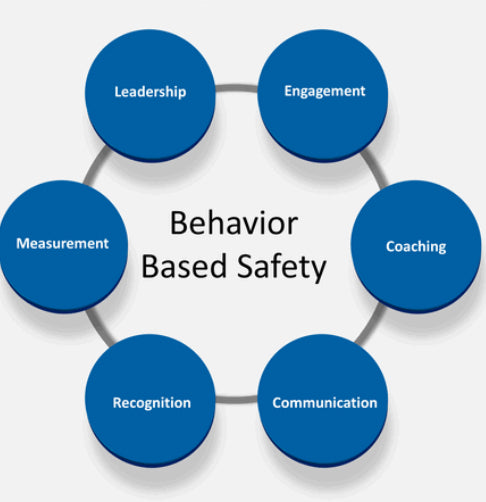Introduction
Behavior-based safety (BBS) is a proactive approach to workplace safety that focuses on the behaviors of employees to prevent accidents and injuries. Recognizing that human error is a common cause of workplace incidents, BBS seeks to address the root causes of these errors through observation, analysis, and intervention.
Key Components of Behavior-Based Safety
BBS programs typically involve three key components:
-
Identifying Safe and At-Risk Behaviors: The first step in BBS is to identify the behaviors that contribute to a safe working environment and those that pose risks. This involves a detailed analysis of workplace activities and the identification of specific actions that can lead to accidents or injuries.
-
Observing and Documenting Behaviors: Accurate observation and documentation are crucial in BBS. This involves monitoring employees as they perform their tasks, noting both safe and unsafe behaviors. Documentation helps in tracking patterns and identifying areas that require improvement.
-
Providing Feedback and Reinforcement: Once behaviors are observed and documented, the next step is to provide feedback to employees. Positive reinforcement is used to encourage safe behaviors, while constructive feedback helps employees understand and correct at-risk behaviors.
Creating a Culture of Safety
One of the main goals of BBS is to create a culture of safety within an organization. By identifying and reinforcing safe behaviors, employees are more likely to prioritize safety in their daily work routines. This can lead to a reduction in accidents and injuries, improved productivity, and a positive work environment where employees feel valued and supported.
Management's Role in Behavior-Based Safety
For a BBS program to be successful, it is important for management to be actively involved and committed to the process. This includes:
-
Providing Training and Resources: Ensuring that employees have the necessary training and resources to perform their tasks safely is crucial. This includes regular safety training sessions, access to personal protective equipment (PPE), and up-to-date safety guidelines.
-
Regular Monitoring and Evaluation: Management should regularly monitor and evaluate safety performance. This involves conducting safety audits, reviewing incident reports, and continuously improving safety protocols based on the findings.
-
Addressing Issues and Concerns: Promptly addressing any safety issues or concerns that arise is essential. This demonstrates a commitment to employee safety and helps in maintaining a high standard of workplace safety.
Employee Involvement in Behavior-Based Safety
Another key aspect of BBS is the involvement of employees in the process. By encouraging employees to take ownership of their own safety and that of their colleagues, organizations can empower their workforce to identify and address potential safety hazards before they lead to accidents. Employee involvement can be fostered through:
-
Safety Committees: Forming safety committees that include representatives from various departments can help in identifying and addressing safety concerns from different perspectives.
-
Safety Incentive Programs: Implementing safety incentive programs that reward employees for safe behavior can motivate employees to prioritize safety in their daily tasks.
Conclusion
Generally speaking, behavior-based safety is an effective and proactive means of improving workplace safety. By focusing on the behaviors of employees and creating a culture of safety within an organization, businesses can prevent accidents, reduce injuries, and create a safe and productive work environment for all employees.
About the Author:
Dr. Neeraj Sharma, PhD - Industrial Safety & Health, Radiological Safety Officer, Lead Auditor IMS and BSC OHS Systems, Competent Person, Leader of OISD Standards Review Committees of OISD 155 (PPE) & 184 (Life Saving Appliances), Member of BIS Standards Review Committees. With over 41 years of rich experience, Dr. Sharma is a Senior HSEF Practitioner dedicated to promoting workplace safety and health.
Milan Safety is committed to providing top-quality safety solutions and training to ensure the well-being of employees across various industries. For more information, visit Milan Safety.
